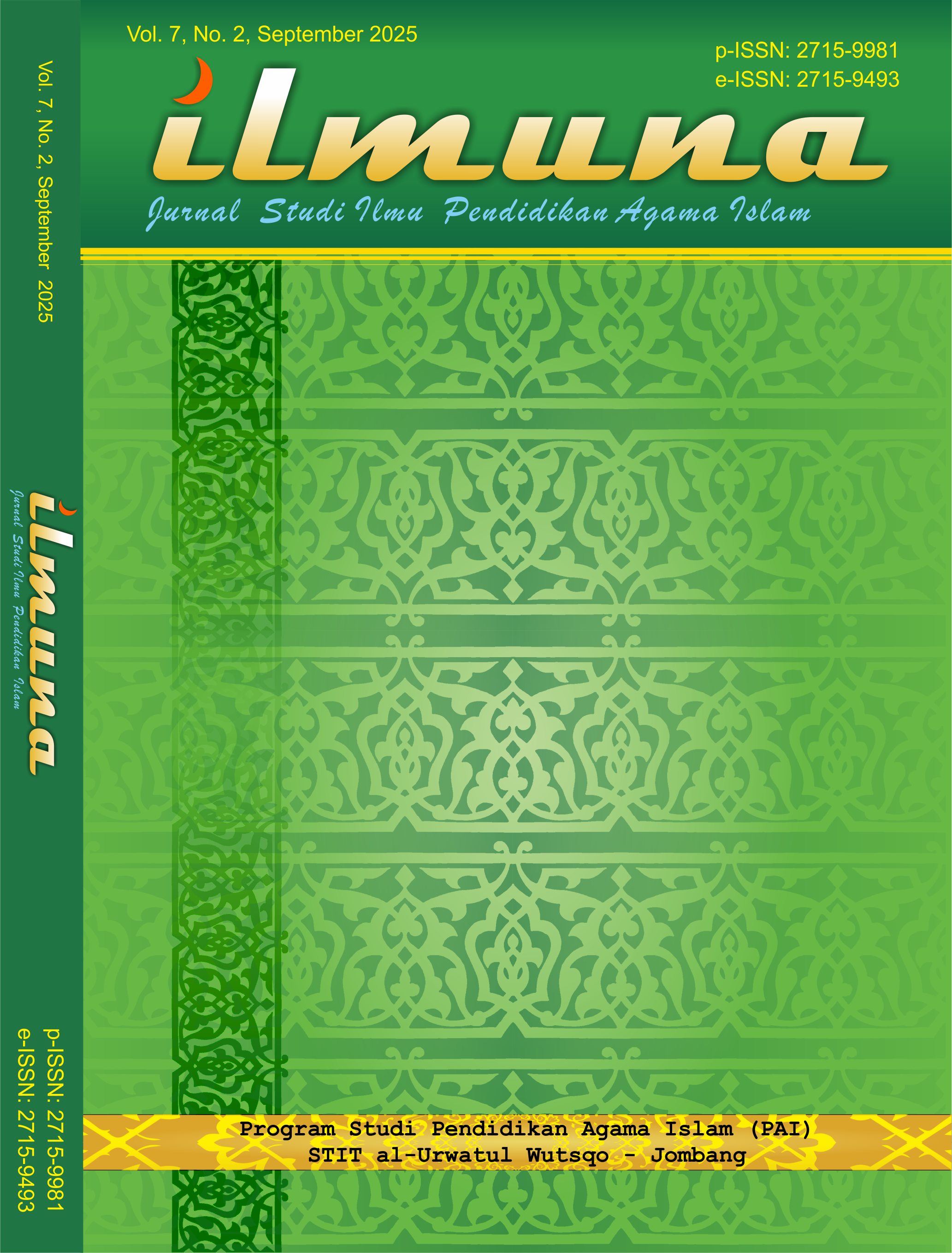MEDIA PEMBELAJARAN PENDIDIKAN AGAMA ISLAM
DOI:
https://doi.org/10.54437/ilmuna.v7i2.2155Keywords:
Islamic Religious Education and Learning Media, Student Involvement.Abstract
Islamic Religious Education (PAI) learning media are tools or learning resources used to facilitate the learning process in understanding Islamic values ??and teachings. PAI learning media aims to help students gain a comprehensive and contextual understanding of PAI content. The development of Islamic Religious Education learning media includes various approaches, including printed media (books, modules), audiovisual media (educational videos), and digital platforms (applications, e-learning) that are adapted to the needs and characteristics of students. By utilizing digital technology, Islamic Religious Education learning media seeks to involve students actively and critically in understanding Islam, fostering noble morals, and instilling Islamic values. This research aims to improve understanding, interest, and application of Islamic religious values ??in students. Through qualitative methods in research on Islamic Religious Education (PAI) learning media, it is possible to gain an in-depth understanding of the effectiveness, experiences, and perceptions of students and teachers in the PAI learning process using various media. Qualitative methods allow researchers to explore how learning media, whether technology-based, visual, or traditional, influence students' interest, understanding, and engagement in religious studies. The results of the research achieved several significant results, both in terms of understanding the material, student involvement, and internalization of religious values ??in everyday life. The expected results from the use of effective Islamic Religious Education learning media are: Increasing Understanding of Material, Increasing Interest and Motivation to Learn, Developing Critical and Reflective Thinking Skills, Internalizing Religious Values ??and Increasing Student Involvement and Participation
Downloads
References
A, Rukaesih. Maolani dan Ucu Cahyana, Metodologi Penelitian Pendidikan. Jakarta: Raja Grafindo Persada, 2015
Arsyad, Azhar, Media Pembelajaran, Jakarta: Rajawali Pers , 2013
Arsyad, Sudjana, Nana dan Ahmad Rifai, Teknologi Pengajaran, Bandung: Sinar Baru, 2020
Azhar, Media Pembelajaran Jakarta: Rajawali Pers , 2013
Indana, Nurul dan Noor Fatikah Elysa Nurul Qomaria, Ali Mustofa, “Revitalisasi Diba’iyah Dan Tpq Di Peterongan: Strategi Pelestarian Tradisi Keagamaan Lokal,” Jurnal Pengabdian Kepada Masyarakat?: Segawati 1, no. 1 (2025): 1–9.
Mustofa, Ali and Nur Arifuddin, Moh. Zahiq, “Islamic Educational Values In Hadits Aqiqah,” Ilmuna: Jurnal Studi Pendidikan Agama Islam 6, no. 2 (2024): 82–98, ttps: // www. jurnal. stituwjombang. ac.id /index.php /ilmuna/ article/ view/1751/886.
Mustofa, Ali, “MEDIA PEMBELAJARAN GAME QUIZ EDUKASI DI ERADIGITAL UNTUK MENINGKATKAN PRESTASI SISWA,” ILJ: Islamic Learning Journal (Jurnal Pendidikan Islam) 2, no. 4 (2024): 839–48.
Nugrahani, Rahina and Jurusan Seni Rupa, “MEDIA PEMBELAJARAN BERBASIS VISUAL BERBENTUK,” LEMBARAN ILMU KEPENDIDIKAN 36, no. 1 (2007): 35–44.
Patilima, Hamid , Metode Penelitian Kualitatif. Bandung: Penerbit Alfabeta. 2013
Supriyadi, Strategi Belajar dan Mengajar, Yogyakarta : Jaya. Ilmu, 2018
Turnip Yohana Niasty Berutu, Helena, Lusiana Siallagan, Edison Simarmata, “KONSEP DASAR DIAGNOSTIK KESULITAN BELAJAR SISWA,” Pediaqu?: Jurnal Pendidikan Sosial Dan Humaniora 4, no. 1 (2025): 1894–1905, https://publisherqu.com/index.php/pediaqu.
W. Creswell, John. Qualitative Inquiry And Research Design: Choosing Among Five Traditions. (London: SAGE Publications, 199
Widiasworo, Erwin, Cerdas Pengelolaan Kelas, Yogyakarta: Diva Pres, 2018
Downloads
Published
Versions
- 2025-09-21 (6)
- 2025-09-09 (5)
- 2025-09-09 (4)
- 2025-09-09 (3)
- 2025-09-02 (2)
- 2025-05-27 (1)









